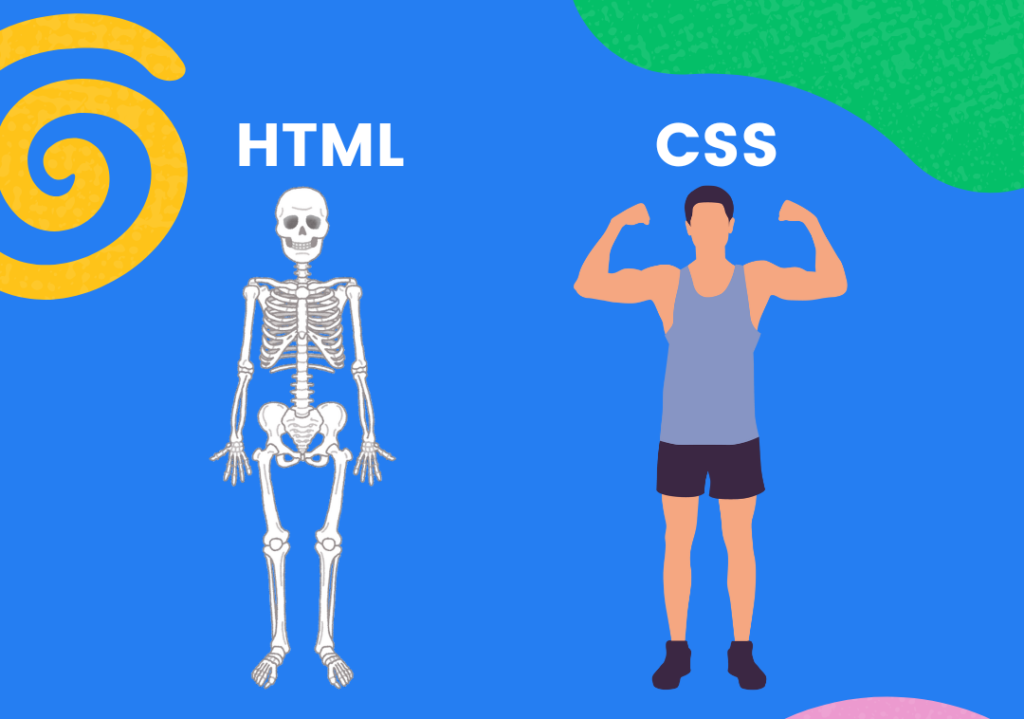Introduction to HTML
HTML (Hypertext Markup Language) is the standard language used to create and structure web pages. It provides the basic framework for websites by defining the content and structure of a webpage. Every website you visit is built using HTML, whether it’s a simple blog or a complex web application.
What is HTML?
HTML is a markup language, meaning it uses tags to “mark up” content. These tags tell the web browser how to display elements like headings, paragraphs, links, images, and more. HTML is not a programming language; it doesn’t have logic or conditions like traditional programming languages (e.g., Python or JavaScript). Instead, it focuses on describing the structure of web content.
- Tags: HTML consists of tags that define elements. Each element typically has an opening tag
<element>and a closing tag</element>. - Elements: These are the building blocks of a webpage, such as headings (
<h1>), paragraphs (<p>), images (<img>), and links (<a>). - Attributes: Tags can have attributes that provide additional information about the element (e.g.,
<img src="image.jpg" alt="description">).

History and Evolution of HTML
HTML was created in the early 1990s by Tim Berners-Lee, the inventor of the World Wide Web, as a way to display and share information on the internet. Since then, HTML has undergone many updates and improvements:
- HTML 1.0 (1993): The first version of HTML that contained simple tags to create basic web pages.
- HTML 2.0 (1995): Introduced more tags and standardized features like forms, which allowed for user interaction.
- HTML 3.2 (1997): Added more support for complex page layouts, including tables and scripts.
- HTML 4.01 (1999): Included support for multimedia elements (e.g., images, audio, video) and better control over web page presentation with CSS.
- HTML5 (2014): The latest major version of HTML, introducing semantic elements, native multimedia support (audio and video), and new APIs for handling data, graphics, and more. It provides better compatibility with mobile devices and integrates well with modern web technologies like JavaScript and CSS.
Importance of HTML in Web Development
HTML forms the foundation of the web. Here’s why it’s so important in web development:
Structure and Layout: HTML is essential for defining the structure of a webpage, allowing developers to create the skeleton of a site. Every element on the page is built using HTML tags.
Accessibility: Proper HTML ensures websites are accessible to everyone, including users with disabilities. For example, using
<alt>attributes on images helps screen readers describe the image to visually impaired users.SEO (Search Engine Optimization): Search engines like Google use HTML to understand the content of a page. Well-structured HTML helps improve a site’s ranking on search engines.
Compatibility: HTML is the universal language of the web. It works across all devices and platforms, from desktops to mobile phones, and all major browsers like Chrome, Firefox, and Safari.
Integration with Other Technologies: HTML is often combined with other technologies such as CSS (for styling) and JavaScript (for functionality) to create interactive and visually appealing websites.
Basic HTML Example
<!DOCTYPE html>
<html lang="en">
<head>
<meta charset="UTF-8">
<meta name="viewport" content="width=device-width, initial-scale=1.0">
<title>My First Webpage</title>
</head>
<body>
<h1>Welcome to My Website</h1>
<p>This is a paragraph of text about my website. HTML makes it easy to structure and organize content on the web.</p>
<a href="https://www.example.com">Visit Example</a>
</body>
</html>Explanation:
<!DOCTYPE html>: Declares the document type as HTML5.<html>: The root element of the HTML document.<head>: Contains meta-information about the document, such as the character set and the title of the webpage.<title>: Defines the title of the webpage, which appears in the browser tab.<body>: Contains the visible content of the webpage.<h1>: A heading element, withh1being the highest level (often used for the main title).<p>: A paragraph element, used for blocks of text.<a>: An anchor element, used to create links. Thehrefattribute specifies the URL the link points to.
Summary
HTML is the backbone of web development, providing the structure and content of every webpage on the internet. From its origins in the early 1990s, HTML has evolved to support modern web applications, multimedia content, and responsive designs. Understanding HTML is essential for anyone involved in web development, as it plays a crucial role in building accessible, SEO-friendly, and well-structured websites. The simplicity and versatility of HTML make it the foundation upon which other technologies like CSS and JavaScript are built.